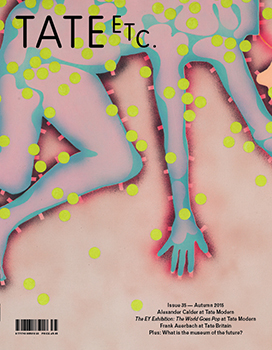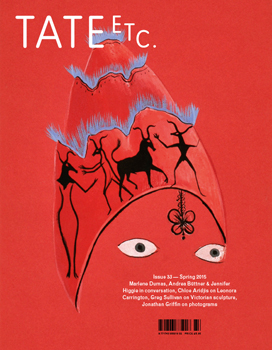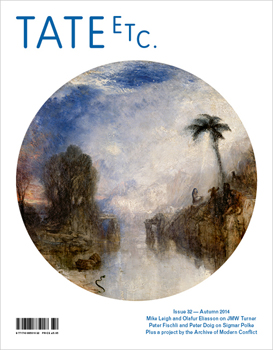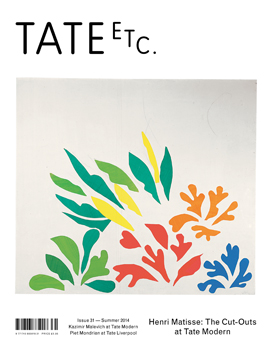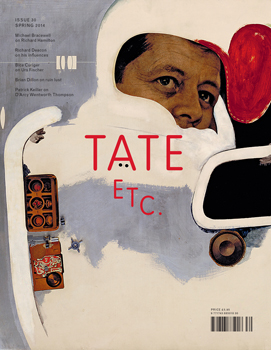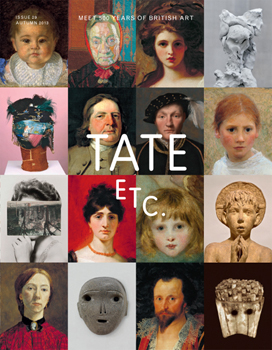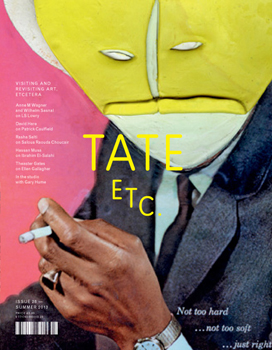Visiting and revisiting art, etcetera
Highlights include: a special feature on Landscape, with an introduction from Robert Macfarlane, and aninvited selection of artists, writers and thinkers describe what landscape means to them, critic Nina Power questions how artists might react to or participate in moments of change, writer Liz Jobey examines Performing for the Camera, critic Richard Cork charts the development of Conceptual Art in Britain 1964–1979 and filmmaker William Raban remembers the London Filmakers’ Co-op.
Other traditions run through depictions of the British landscape, below and beyond romantic idealisations. In a special feature, author Robert Macfarlane traces a history in art of the decidedly strange and eerie face of landscape. Justin Hopper, Shirley Collins, Anne Douglas and Chris Fremantle, Glen Jamieson, Hayden Lorimer, Jessica Warboys and Andrew Kötting describe what landscape means to them.
The new Tate Modern display Citizens and States poses a range of possible ways that artists might react to or participate in moments of change. Lecturer and writer Nina Power takes this as a starting point to look at a further set of global examples of how they are documenting, memorializing and intervening in times of violence and protest.
Photography changed the way we look at ourselves and how we might act in front of a camera, but it also changed the way performance artists could portray and develop their work. The new Tate Modern exhibition Performing for the Camera explores the relationship between the photographic image and performance. Writer Liz Jobey examines how artists have, for more than a century, documented, delighted and deceived with photography.
The 1960s saw a profound change in how artists were working, with some turning away from producing anything that might have been previously recognisable as art. What came to be known as conceptual art was not limited to traditional media, but instead focused on ideas that could take any form: performances, texts, postcards, temporary sculpture—or nothing at all. Tate Britain’s forthcoming exhibition Conceptual Art in Britain 1964–1979 charts the development of this new breed of art from an era of optimism and experimentation through the economic recession of the 1970s. Richard Cork, one of the critics engaging with the work at the time, recalls how these conceptual artists emerged in a transformative period of cultural and political upheaval.
The year 2016 marks the 50th anniversary of the London Filmmakers’ Co-op, a group founded to screen and distribute experimental cinema. Filmmaker William Raban, who managed the co-operative workship from 1972 to 1976, remembers the influential organization.
Tate Etc. – Europe’s largest art magazine
Subscribe here or call T +44 (0) 20 7887 8959
